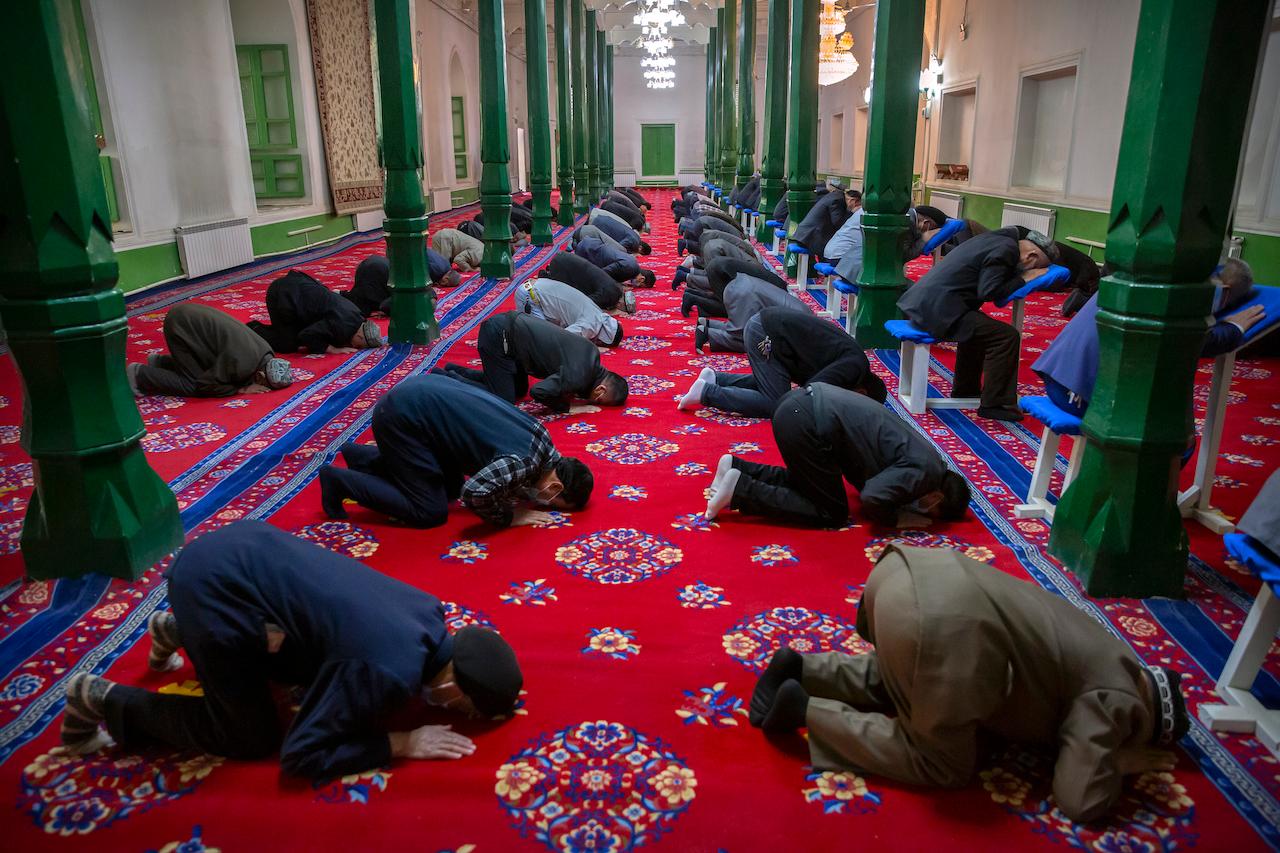Ramadan in Xinjiang: officially renovated mosques welcome fewer worshippers
For the moment, Islam lives on, though the Sinicization campaign has palpably reduced the role and visibility of religion in daily life.
Under the weight of official rules and policies from Beijing, the future of Islam appears precarious in Xinjiang, reports the Associated Press.
Observers claim scores of mosques have been demolished – a charge Beijing denies.
But no-one denies the number of worshippers is plummeting.
A decade ago, 5,000 people attended Friday prayers at the Id Kah mosque. Now only around 800 do, said the imam.
He attributed the fall to a natural shift in values, not government policy, saying the younger generation wants to spend more time working than praying.
Beijing says it protects freedom of religion, and citizens can practice their faith so long as they adhere to laws and regulations.
In practice, from a primary school where the headmaster said fasting wasn’t observed because of the “separation of religion and education”, to a cotton yarn factory where workers are banned from praying on site, it’s getting more difficult to pray and fast.
Workers are free to fast, but they are also required to take care of their bodies. If children fast, it’s not good for their growth, said the imam.
Beijing denies incarcerating Muslims and using them as forced labour – accusations that have strained China’s relations with Western governments.
Officials insist they have spent heavily on upgrading mosques, outfitting them with fans, flush toilets, computers and air conditioners.
In Xinjiang, the Uighur regions have borne the brunt of a government crackdown that followed a series of riots, bombings, and knife attacks.
There are always claims of the authorities tearing down mosques.
Id Kah mosque is far from destroyed. Its imam toes the official line and spoke thankfully of the government largesse that has renovated the more than 500-year-old institution.
“There is no such thing as mosque demolition,” he said, “other than some rundown mosques taken down for safety reasons.” He added he was also unaware of mosques being converted to other uses.
At dusk, around 50 mostly elderly men arrived to pray.
The ban on religious education for minors means that the young aren’t gaining the knowledge they should, one worshipper said.
“The next generation will accept the Chinese mindset. They’ll still be called Uighurs, but their mindset and values will be gone.”
Officials say those who want to study Islam can do so after the age of 18 at a state-sponsored Islamic studies institute. In Urumqi, the capital of Xinjiang, hundreds train to become imams according to a government-authored curriculum, studying a textbook with sections called, “Patriotism is a part of faith”, and, “Be a Muslim who loves the motherland, abide by the national constitution, laws and regulations.”
The foreword reads, “Continue the Sinicization of Islam in our country. Guide Islam to adapt to a socialist society.”
For the moment, Islam lives on, though the Sinicization campaign has palpably reduced the role of religion in daily life.
The Muslim profession of faith has been removed from the front of the mosque.
On a Wednesday evening at prayer time, the halls were nearly empty, and worshippers had to go through x-rays, metal detectors and face-scanning cameras to enter.
Freedom of religion in China is defined as the freedom to believe or not believe.
It’s not just that people have the right to fast or pray, they also have the right not to fast or pray.
The mosque, which now flies a Chinese national flag above its entrance, has been refurbished, but fewer and fewer people come to worship.
Subscribe to our newsletter
To be updated with all the latest news and analyses daily.
